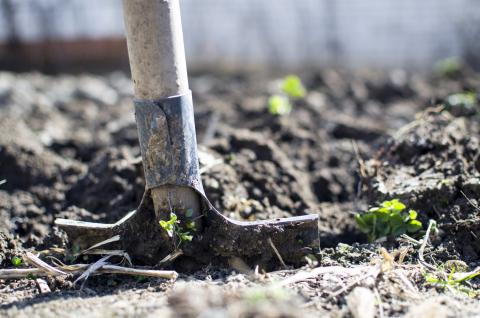Winterizing Your Garden Tools

You know the feeling: it's finally spring, you're getting home full of excitement after a trip to your local nursery, and you're ready to get to work in your garden. You open up your toolshed, and the excitement is replaced with horror. Your tools are rusted and cracked– gardening will have to wait.
But it doesn't have to be like that. With a few simple steps at the end of fall, you can ensure your garden tools are in great shape and ready to use when you need them at the start of spring. That's right – no headache, just gardening.
-
Garden hoses: Thoroughly drain, then store rolled up and laid flat. Improper storage may result in splitting and cracking of the hose.
-
Hedge shears, pruning saws, loppers and hand pruners: Clean, sharpen, and oil before storing. Depending on what is on your tools, you can use anything from steel wool (with lots of elbow grease) to rubbing alcohol. For tough to get off pine pitch and sap, you can also clean your tools using a rag dipped in paint thinner (follow directions on the can for safety). Once you sharpen the cutting blades of these tools, oil them thoroughly to prevent them from rusting.
-
Sprayers and spreaders: Drain and clean thoroughly. Oiling the metal parts of the sprayer can help prevent rust. Fertilizer that remains in the spreader will absorb water, which will cause the spreader to rust. Lubricate all moving parts and wipe all parts prone to rust with an oil rag.
-
Shovels, rakes, hoes, and other hand tools: Clean with soap and water before storing. If any soil remains caked on, use a wire brush or steel wool. This will also help to remove rust spots. Treatment of the wood handles is important to prevent drying, cracking, or weathering of the handle. Paint the handles with boiled linseed oil, which you can purchase at most hardware stores. Coat the metal parts with a light weight oil or a silicone spray. This treatment will help to prevent rust.
-
Tools with a blade: Re-sharpen using a power grinder or hand file. Replace any broken or split wooden handles.
The one tool that you may need to use during the winter months is your favorite snow shovel. Check and clean the blade and ensure the handle is in good shape. A helpful hint when shoveling wet winter snow is to wax the shovel blade or spray it with silicone. You can even use your favorite cooking oil spray on the blade. This will help the snow slide off the blade easily instead of sticking.
Your storage area should be dry and clean. Take the time not only winterize your tools, but to organize them. Checking, cleaning, sharpening, oiling, drying, and organizing your garden tools at the end of fall will set you up for success in the spring.
This was your Question of the Week. Got questions? The Ask UNH Extension Infoline offers practical help finding answers for your home, yard, and garden questions. Call toll free at 1-877-398-4769, Monday to Friday, 9 a.m. to 2 p.m., or e-mail us at answers@unh.edu.
